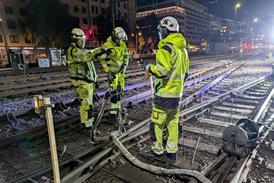Passenger trust, digital expectations and changing travel patterns will drive transport innovation in 2023
By Metro Report International and Galen Chui2023-01-31T05:00:00

Making accurate predictions in an increasingly unpredictable world can be a fool’s errand, but Galen Chui, Senior Vice-President of Engineering & Products at Cubic Transportation Systems, looks at the trends that will shape public transport in the coming year.
Already have an account? LOG IN
To continue…
You’ve reached your limit of content for the month
Get enhanced access to Railway Gazette news and weekly newsletters.

For almost 200 years, the Railway Gazette Group has been the leading provider of news, analysis and intelligence for the international railway industry. Our independent and authoritative content is read by operators, regulators and the supply industry in over 140 countries using a variety of tailored subscription packages.
Site powered by Webvision Cloud



